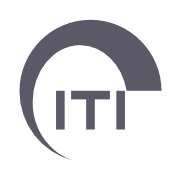Bone Augmentation Procedures in Localized Alveolar Ridge Defects - Consensus Statements - Home
Surgical Techniques, ITI CC 2008
Bone Augmentation Procedures in Localized Alveolar Ridge Defects
Definition of Terms
The following definitions were adopted from the Glossary of Oral and Maxillofacial Implants(1):
- Autograft (synonymous with autogenous graft): Tissue transferred from one location to another within the same individual.
- Allograft: A graft between genetically dissimilar members of the same species.
- Xenograft: A graft taken from a donor of another species.
- Alloplast: Inorganic, synthetic, or inert foreign material implanted into tissue.
- Dehiscence: A buccal or lingual bone defect in the crestal area extending apically at an implant.
- Fenestration: A buccal or lingual window defect of either bone or soft tissue, occurring over a root, implant, or alveolar ridge.
References:(1) Laney WR (ed). Glossary of Oral and Maxillofacial Implants. Berlin: Quintessence, 2007.
Consensus Statements
General Statements
- There are a variety of augmentation materials available with different biologic and mechanical properties, ranging from particulate alloplastic materials to intraorally harvested block grafts.
- There are a variety of defect situations with increasing complexity, ranging from fenestrations to dehiscences to lateral deficiencies to vertical deficiencies including combinations of these.
- Survival rates of implants placed in regenerated bone after treatment of localized defects in the alveolar ridge are comparable to survival rates of implants placed in native bone. It was not possible to demonstrate the superiority of one augmentation technique over another based on implant survival rates.
Dehiscence and Fenestration-type Defects
- Augmentation of dehiscence and fenestration-type defects is effective in reducing the amount of exposed implant surface. Complete resolution of dehiscence and fenestration-type defects cannot be predictably accomplished, regardless of which grafting protocol is employed.
- Increased defect fill was observed when the augmentation procedure included the use of a barrier membrane.
- Survival rates of implants placed simultaneously with augmentation of dehiscence or fenestrationtype defects are high.
Horizontal Ridge Augmentation
- Techniques are available to effectively and predictably increase the width of the alveolar ridge.
- Augmentation utilizing autogenous bone blocks with or without membranes results in higher gains in ridge width and lower complication rates than use of particulate materials with or without a membrane.
- Survival rates of implants placed in horizontally augmented alveolar ridges are high.
Vertical Ridge Augmentation
- Techniques are available to increase the height of the alveolar ridge. However, the predictability is substantially lower and the complication rate substantially higher than with horizontal ridge augmentation procedures.
- Augmentation utilizing autogenous bone blocks with or without membranes results in higher gains in ridge height than use of particulate materials with or without a membrane.
- Survival rates of implants placed in vertically augmented alveolar ridges are high.
Maxillary Sinus Floor Elevation Using the Transalveolar Approach
- Maxillary sinus floor elevation using the transalveolar approach is predictable for augmenting bone in the posterior maxilla.
- A variety of grafting materials can be safely and predictably used, alone or in combination. These materials include autografts, allografts, xenografts, and alloplastic materials.
- At present, it is not clear whether the introduction of a grafting material improves the prognosis.
Clinical Recommendations
- Dehiscence and fenestration-type defects may be successfully managed using a particulate autograft, allograft, or xenograft covered with a membrane.
- Horizontal ridge augmentations often require the use of an autogenous block graft, which may be combined with a membrane and/or a particulate autograft, allograft, or xenograft.
- Vertical ridge augmentations most often require the use of an autogenous block graft, which may be combined with a membrane and/or a particulate autograft, allograft, or xenograft. Despite the use of an autogenous block graft, elevated rates of complications and a need for additional grafting have to be anticipated. Even localized vertical bone deficiencies may require advanced surgical procedures like distraction osteogenesis, interpositional grafts, or onlay grafts from extraoral donor sites.
- The clinician should be aware that the obtainable defect fill decreases and complication rates and need for additional grafting procedures increase with more demanding defect types. The augmentation material should be selected according to the biologic and mechanical characteristics needed in the specific clinical situation.
- The use of a membrane is indicated whenever a particulate material is applied.
Downloads and References
Share this page
Download the QR code with a link to this page and use it in your presentations or share it on social media.
Download QR code